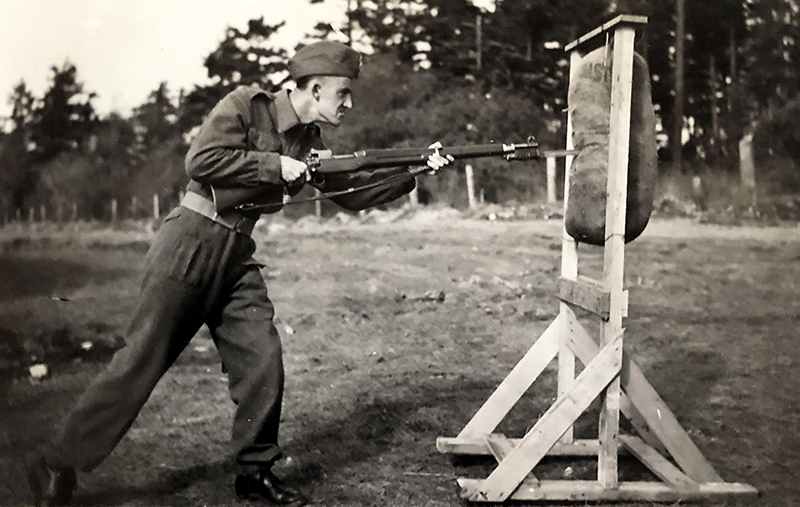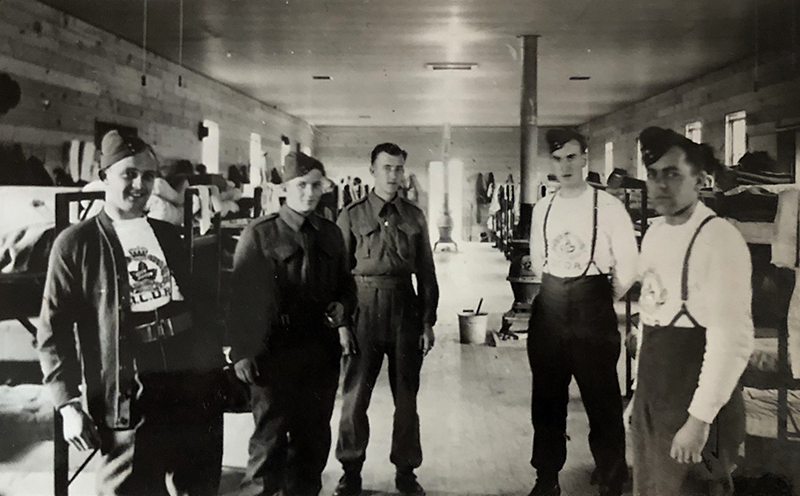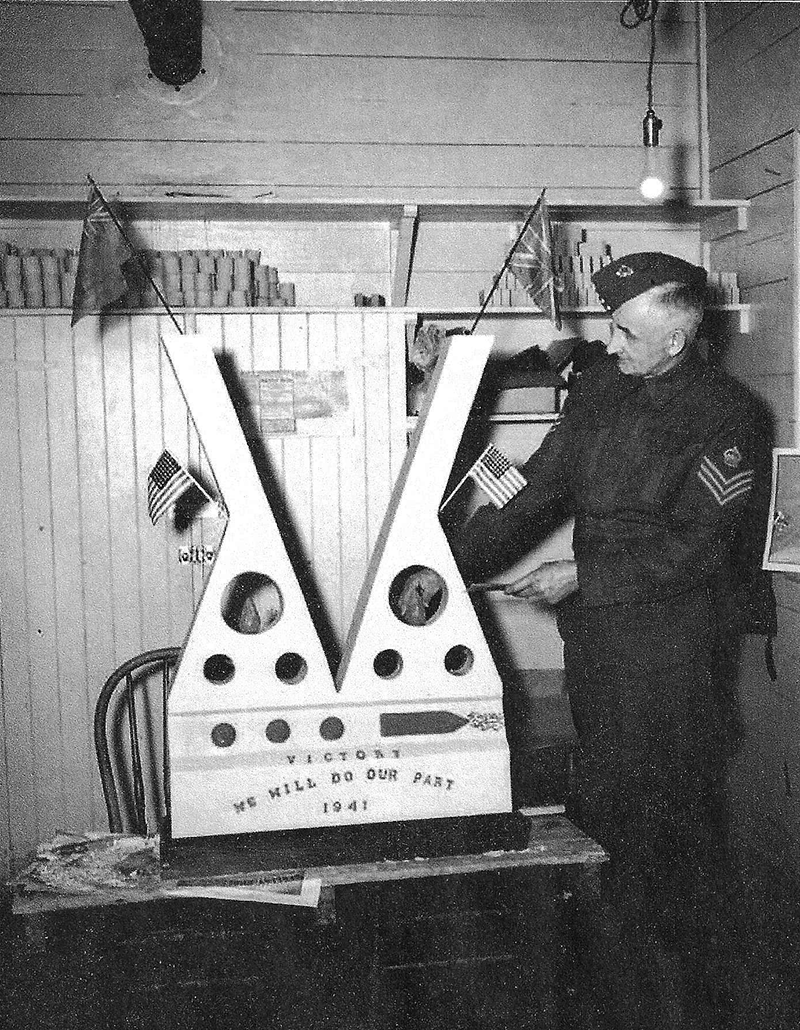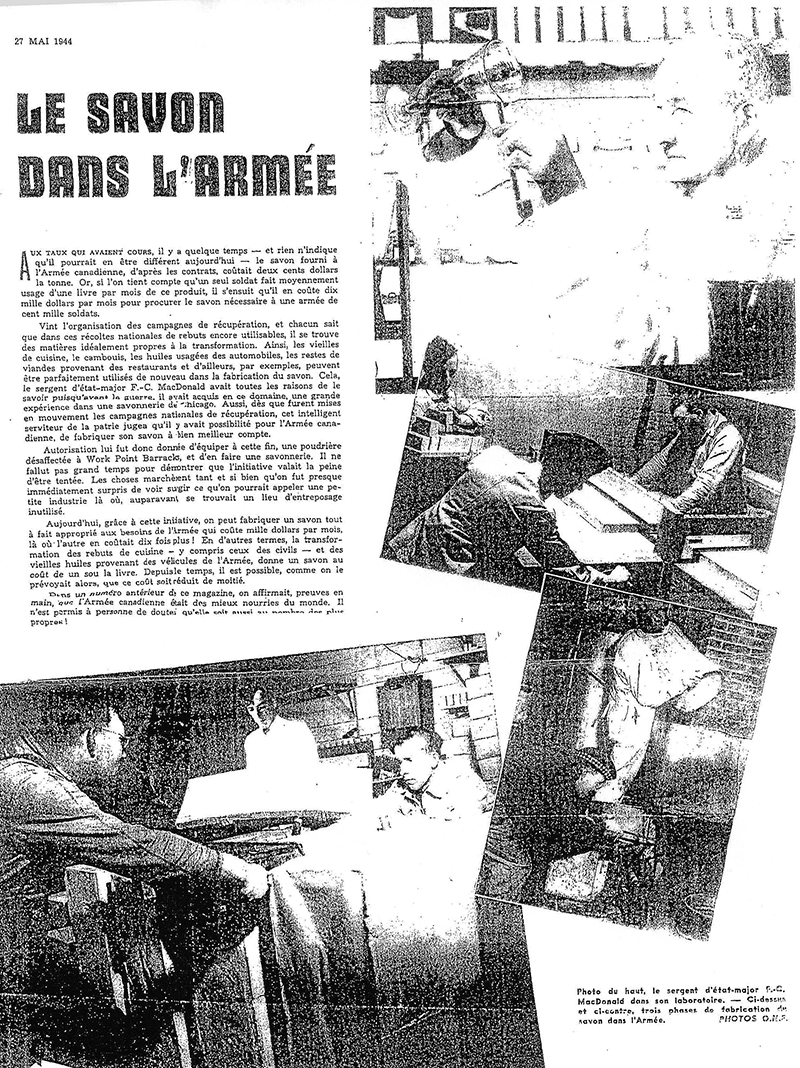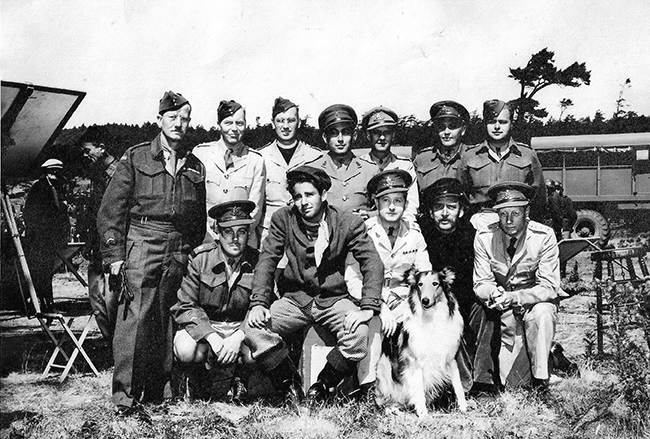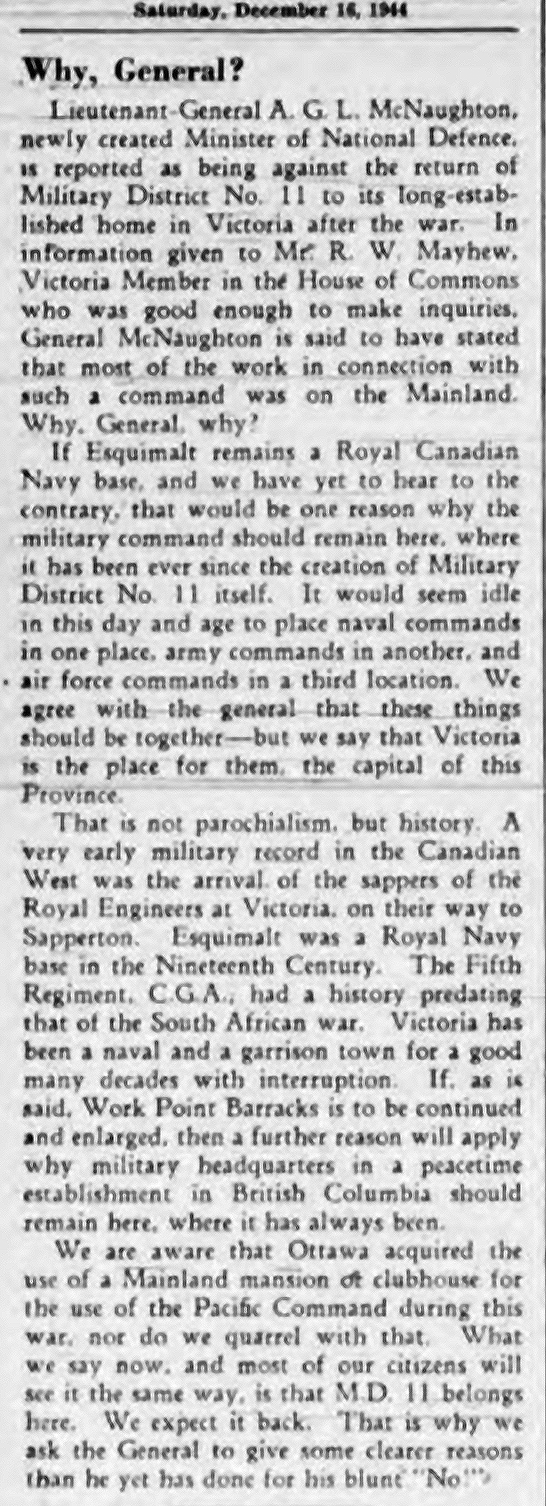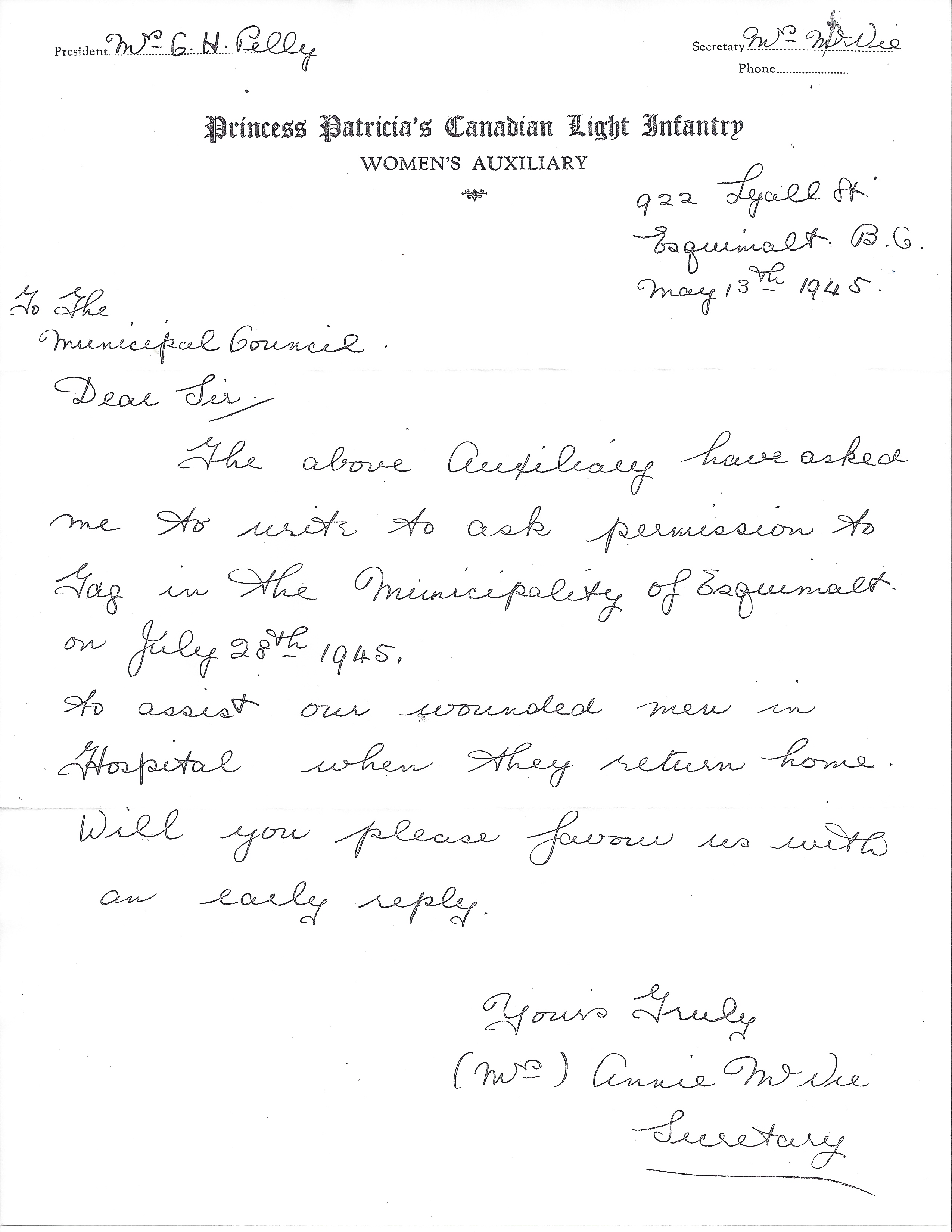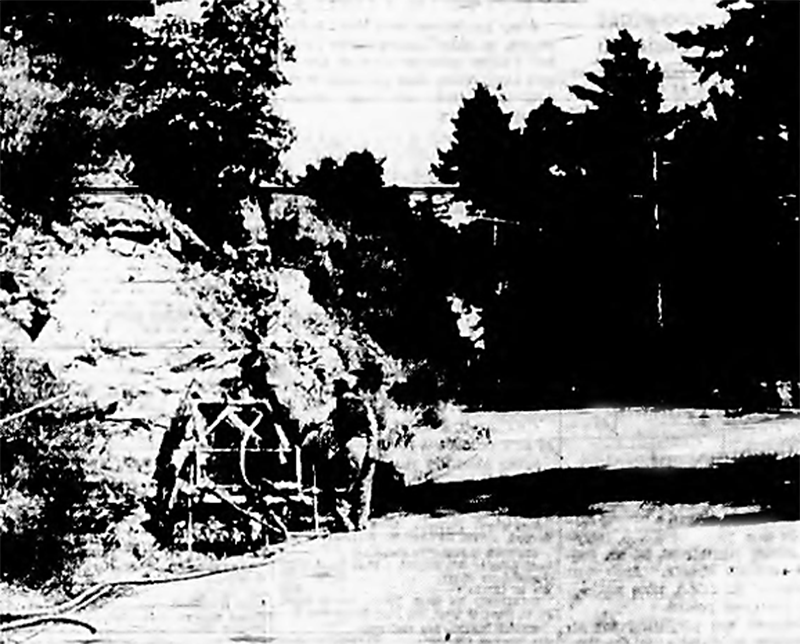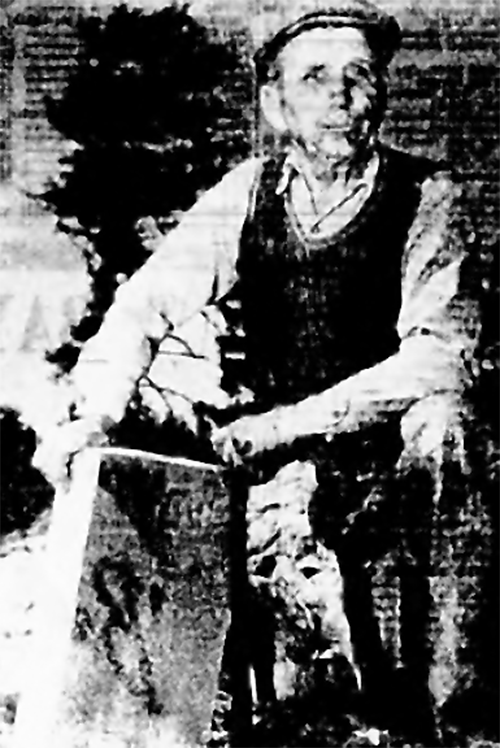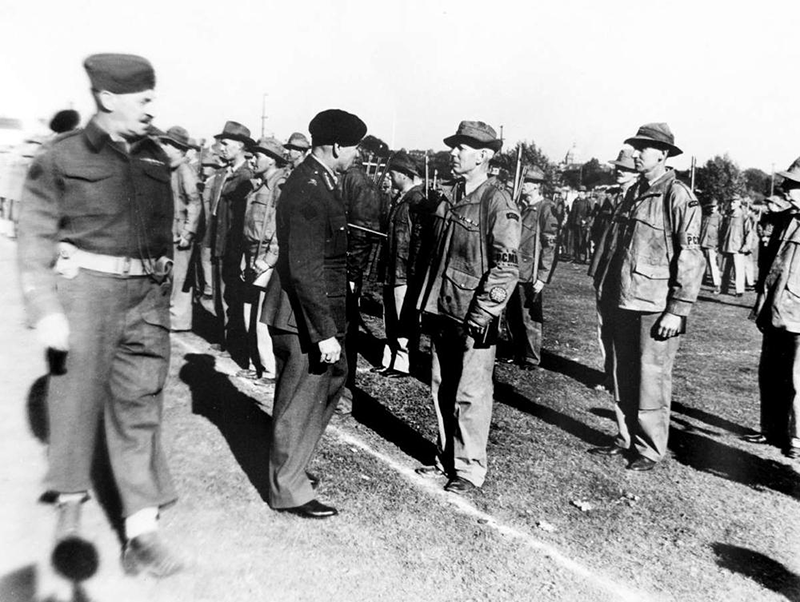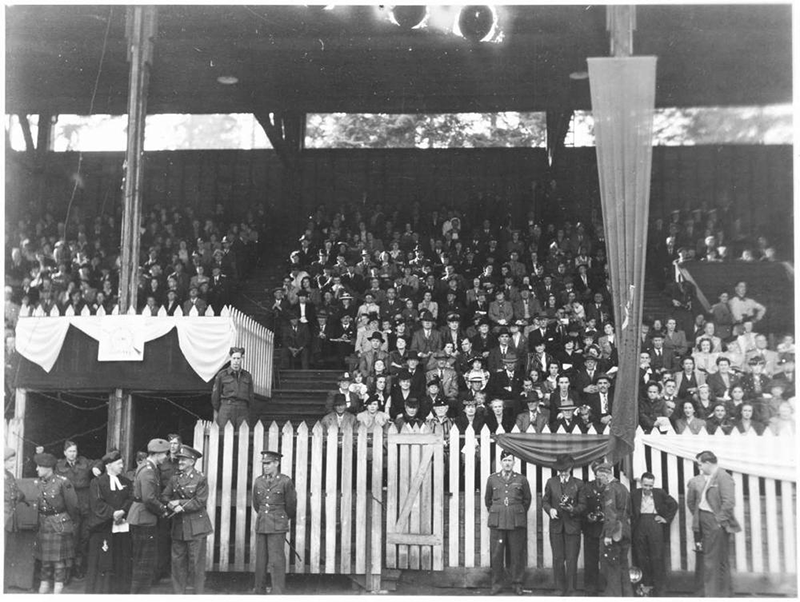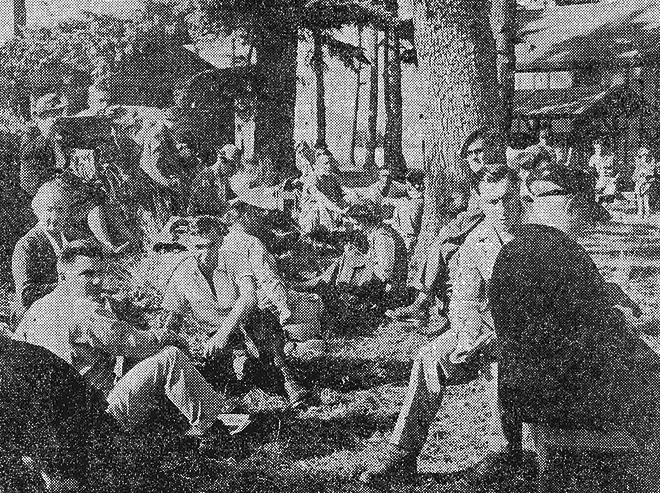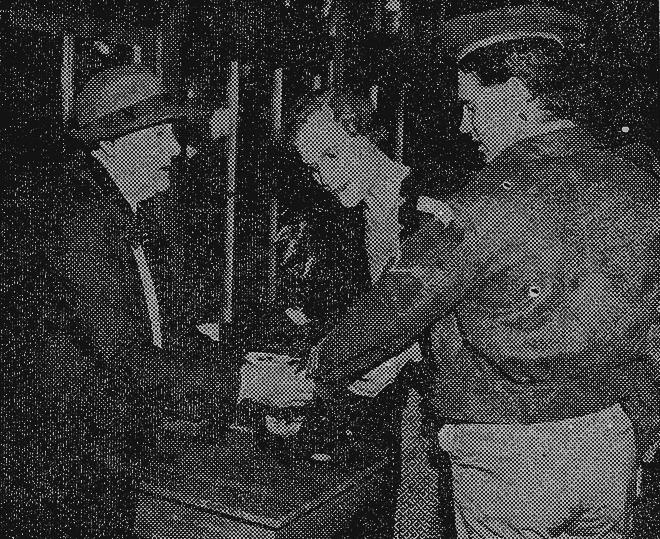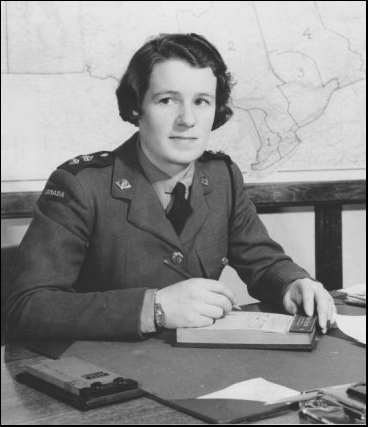
 OPCMHVisitor No.: |
HISTORY OF WORK POINT BARRACKSby Jack BatesPART 6 — 1940 to 19561940With the departure of the PPCLI detachment, the main units which garrisoned Work Point Barracks and Macaulay Camp were that of coastal and anti-aircraft artillery, the overseas training centre with support units, and the Canadian Scottish Regiment. January 1, 1940, by this time the bulk of the Machine Gun Company of the Canadian Scottish had moved and settled in Work Point Barracks. Conditions at Work Point were not ideal by any means. There was a shortage of office and storeroom space. Transportation was another drawback since it was not until January 5th that the unit was loaned one truck. Crowded barracks, lack of sufficient clothing and proper footwear, led to a large number of men with influenza. Also in residence at Work Point was the RCE Works Detachment, 11 Military District. They numbered 3-5 officers and 35-50 other ranks. Associated with them were an equal number of civilians. Macaulay Camp became the home for the 1st Battalion of the Canadian Scottish early in 1940, just across the road from Work Point Barracks. The area was previously part of a golf course, and it was this pleasant landscape which was being covered with “H” huts even as the battalion moved in, some to occupy huts and some in tents. It was a nice location, close to home for many, and yet so situated as to include a sweeping view of the Strait of Juan de Fuca and the snow-capped Olympic Mountains beyond. It was while the 1st Battalion was at Macaulay Point that its most famous “recruit” joined up. He never polished a button nor cleaned a rifle, yet was a favourite of the most exacting officers. He was little more than a year old when he “enlisted”, yet he had a serious solemn gravity about him which even a new second lieutenant could not match. This new recruit was “Wallace,” the St. Bernard dog, who became the mascot of the battalion. COLONIST EVENTS COMPILED FROM THE COLONIST BY LEONA TAYLOR January 1940 – December 1940 Click here to view events as a PDF Daily Colonist OFFICIATES AT REOPENING OF COURSE Brigadier C.V. Stockwell, DSO, District Officer Commanding MD # 11, is caught by the Colonist staff photographer, driving the ball from the first tee as the Macaulay Point Golf Club was reopened yesterday afternoon for soldiers in the Victoria and district. There was quite a large attendance of onlookers as the Brigadier smacked the ball down the rejuvenated first fairway. Freddy Burns who has been a professional at the Esquimalt course for over fifteen years, supervised the reconstruction of the links. There is just a small fee charged to the troops for playing on the course, and the layout is kept busy during the week.
MACAULAY POINT GOLF COURSE Esquimalt Minute Book A letter from Major Sherwood was read requesting on behalf of the DND for permission to erect temporary huts at the end of Peek Street in the vicinity of the new fort for the duration of the war. Moved by Councillor Hadfield, seconded by Councillor Guillemaud that “This request be referred to the Foreman of the Works for report and Major Sherwood be requested to furnish the Council with a statement of all construction both above and below ground on Macaulay Point Golf Course and whether any portion of this area is being used as a Golf Course." Daily Colonist NEW YMCA HUT WILL BE OPENED
Shown above is the smart new Y.M.C.A. Red Triangle hut on Bewdley Street at Anson, Macaulay Point. Recently completed, the building will be officially opened later in the week. Tomorrow night, however, the first programme will be given in the hut, to which all men in uniform are invited. The Y.M.C.A. board of directors and their wives will act as hosts to the men. A dance and refreshments will follow the performance of the concert party, and W.T. Straith, M.P.P., will act as chairman. Dudley Wickett will direct the programme, which will include selections by the Elizabethan Singers, a hand balancing act by Larry Moore, monologues by Hope Denbigh, and community singing with Fred Arnot at the piano. MACAULAY CAMP BACK TO VICTORIA FROM WINTER TRAINING CAMP Swinging along in the rain to the skirl of the pipes and the roll of the drums, the First Battalion, Canadian Scottish Regiment, marched into the city yesterday to take up quarters at Macaulay Point, after several months of training at Otter Point. The battalion “foot-slogged” the twenty-seven miles in two days, and on Monday afternoon engaged in a mock skirmish with the Second (Machine Gun) Battalion, which was en route to Otter Point for training there. Leaving Otter Point on Monday morning in battle formation, with scouts out ready for the attack, the First Battalion encountered the mechanized machine gun unit about halfway along the route to the city, and after the “battle,” the two battalions bivouacked for the night – the First Battalion completing its route march in to Macaulay Point yesterday. The Second Battalion traveled to the meeting place by lorre on Monday, and marched the remainder of the distance to Otter Point yesterday. Brigadier C.V. Stockwell, D.O.C., met the two battalions at the bivouack.
June 1940, 2 - 12-pounder QF guns mounted at Golf Hill, and 1 – 12-pounder gun, originally mounted at Ogden Point breakwater, manned by 56th Battery.
CANADIAN SCOTTISH REGIMENT Click to view PDF image of Canadian Scottish Regiment Pipes and Drums Band, 1940, on Government Street, in the May Day Parade. TIMES MAY TURN CANNON INTO SCRAP METAL Great war cannon on the causeway, junction and City yards will be turned over to the Federal Government for scrap metal if the need arises, the City Council parks committee decided yesterday afternoon. WORK POINT BARRACKS
Daily Times OLD TIMES COPY LINK WITH PAST The July 11, 1892, copy of the Victoria Daily Times, unearthed at Work Point Barracks yesterday by Col. H.L. Sherwood, when an old building was being torn down, is an interesting link with the Victoria of 50 years ago. The front page of six columns is mostly given to advertising and many of the firms are long since gone. Some of the old firms, well remembered by pioneers, are Hughes and O’Brien (groceries and provisions); Nicholls and Renouf (paints); the Stanley House (general drygoods); Langley & Company (disinfecting powder); George E. Munro (groceries and provisions); Swinerton and Oddy (real estate brokers); Gilmore and McCandless (advertising a drawing for a horse and buggy); the Canadian Pacific Navigation Company, forerunner of the C.P.R.; the Bank of British Columbia, W.C. Ward, manager; J.W. Mellor’s (wall papers); the Victoria Shirt Manufacturing Company; Perry, Gray and Davis, (civil and mining engineers); the new Vancouver Coal Mining and Land Company; the Japanese Bazaar; G.A. McTavish (flower seeds); the Westside, which later became Angus Campbell’s, now out of business; Jackson and Mylius (watchmakers and jewellers); George J. Jackson (tailor, now the famous Dr. Jackson of the breakfast foods); F.G. Richards (real estate and financial broker); Hotel Driard, Redon and Hartnagle and Hotel Victoria, P.J. Patton; Beaumont Boggs & Company (real estate and insurance); Heisterman & Company; Charles Hayward, funeral director and embalmer. The other funeral director of the day was C.B. Lockhart & Company. Prime Minister Abbott was in charge of the Canadian government of the day, according to news dispatching. There was an election on in Britain, and Gladstone had just been conceded victory. Ravachol, the anarchist murderer, was guillotined that morning in Paris. The sealing fleet had just arrived home, among the ships being the Mary Taylor, Pioneer, San Diego and Otto. The Pioneer, with 419 skins, came home in charge of Capt. Gedded, her master, Capt. McGouall, having been drowned. It was reported that the crew of the Rosie Olsen, Capt. Michael O’Keefe, had refused to allow American officers to board the schooner and that she had been seized and sent to Sitka. October 4, 1940, the 1st Battalion, Canadian Scottish with approximately 1,000 all ranks, marched out of the gates of Macaulay Camp Barracks en route to the docks. As tensions with Japan increased, Pacific Command was established at Work Point Fortress Headquarters in October of 1940. Joint USA and Canada meetings were held for mutual protection of the Juan de Fuca straits. This also afforded increased protection against German attack. The first Commanding Officer was Major Gen RO Alexander who resided in Work Point Barracks. He was also the DOC of MD # 11. Searchlights in place at the end of 1940 were: 1 at Saxe Point, 1 at Harrison Point and 2 at McLoughlin Point. COLONIST SEARCHLIGHT FOR COASTAL DEFENCE
I am curious that it states Canada’s East Coast ... here at Victoria-Esquimalt we had 17 such searchlights during this period. September 25, 1940 (10 – 12) The listed photographs are complete with names of all the 1st Battalion Canadian Scottish Regiment. An excellent set of pictures.
September 25, 1940 (12) SEES TROOPS IN COLWOOD CAMP Major-General Griesbach Inspects The 2nd Battalion, The Canadian Scottish Regiment, C.A.S.F., and the 13th Field Ambulance R.C.A.M.C., C.A.S.F., both undergoing training at Colwood, were inspected yesterday by Major-General W.A. Griesbach, inspector-general of the army in Western Canada, who is at present engaged on a comprehensive tour of inspection of C.A.S.F. units and coast fortresses in this area. General Griesbach was accompanied by Brigadier C.V. Stockwell, D.O.C., and other officers from military district headquarters at Work Point. On arrival at the camp at 9:30 a.m. he inspected the troops en masse and afterwards took the salute in a ceremonial march past. Later, the inspector-general viewed the quarters of the two units, and left at 12:15 p.m. COLONIST EARS ON EASTERN COAST
I suppose this would be the same here on the west coast although I haven’t heard of it 1941ESQUIMALT NAVAL BASE Newspaper article B.C. ARCHIVES APPEAL To the editor: The older residents of this city will remember the years 1893 till 1906, when Imperial troops garrisoned the naval base at Esquimalt. The units were Royal Marine Artillery, Royal Engineers and Royal Garrison Artillery. A special effort is being made to gather up all local material dealing with the officers, N.C.O.’s and men before the records are lost. There are no copies of the Official Monthly Army Lists in the Provincial Library, which is quite a handicap to the work of students. I therefore make an appeal to anyone who has one or more copies of the Official Monthly or Quarterly Army Lists between 1893 and 1906 to come forward and present them to Dr. Kaye Lamb for safe custody in the library. To most people an old list of any sort seems of no value, but they are of great value to students and in their name I make this appeal. F.V. LONGSTAFF COLONIST EVENTS COMPILED FROM THE COLONIST BY LEONA TAYLOR January 1941 – December 1941 Click here to view events as a PDF COLONIST NURSES ARE GIVEN RANK OF OFFICERS Eight new members have been added to the establishment of the military hospital at Work Point Barracks, it was learned yesterday. Mostly graduates of local hospitals, the girls will don the blue uniforms and white veils of the army nursing sisters and will take rank as Lieutenants, under Captain Mary Cavanagh, matron. The new sisters include Miss Margaret Fletcher, daughter of Mr. and Mrs. J.H. Fletcher, graduate of the Royal Jubilee Hospital and possessor of a degree in public health nursing; Miss Margaret Coutts, Jubilee graduate and former assistant operating-room supervisor there; her twin sister, Josephine Coutts, also a Jubilee graduate; Miss Gwendolyn Hitchins-Smith, daughter of Mr. and Mrs. W. Hitchins-Smith, Cambridge Street, and a graduate of the Vancouver General Hospital; Miss Dorothy M.J. Rawson, St. Joseph’s Hospital graduate and former office nurse there; Miss Mary Leith, Jubilee graduate and former supervisor of the isolation unit there; Miss Phyllis Jones, Jubilee graduate and on the staff there for the past year, and Miss N. Alleyn, graduate of St. Paul’s Hospital, Vancouver. Other nursing sisters at Work Point Hospital are Lieutenants Elizabeth Bryden, Betty Monteith, Mary Minor, Amelia Pillsbury, Isabel Kent, Jean Cairns and Marion Hunter Ogilvie. COLONIST PPCLI AUXILIARY The regular social meeting of the W.A. to the PPCLI will be held tomorrow at the home of Mrs. R. McVie, 922 Lyall Street, Esquimalt, at 8 p.m. COLONIST SOLDIERS LEARN TRADES An article and photos by Tom Taylor on trades training for soldiers. SAXE POINT SEARCHLIGHT BATTERY The Search Light Battery was built at Saxe Point in 1941 to protect Esquimalt Harbour. The agreement was that the grounds would be left “as found” when the site was dismantled. The Battery was removed in 1956. Esquimalt Minute Book A letter from the DND was read enclosing plan of a portion of Saxe Point Park which the department requested permission to lease for military purposes. Moved by Councillor Christensen seconded by Councillor Heald that “This property be leased to the DND at a yearly rental equal to the taxes on the understanding that the use of the park by the public is not interfered with and that the upkeep of the road within the park will be taken care of by the department.” MACAULAY POINT GOLF COURSE Esquimalt Minute Book Another letter from Major Sherwood was read “stating that the DND would not require to erect huts on Peek Street as previously requested and at the same time enclosing blue print showing building erected on Macaulay Point Golf Course. Major Sherwood further stated that a portion of the Old Course is used for playing and the greens will be maintained as well as possible.” Received and filed. March 27, 1941 The Pacific Command Victoria – Esquimalt Fortress’ mandate established was: “The defence, in conjunction with USA, defences on the south shore of the Juan de Fuca Strait.” COLONIST 5TH KEEPS WATCH An article and photos by Tom Taylor on the history and role of the 5th Regiment in Victoria in local defence. COLONIST THE 88TH BATTALION CEF An article and photos by Frank Giolma on the history of the 88th Battalion, CEF, from Victoria. VERNON, BC COLONIST IS LIAISON OFFICER Lieutenant Gus Sivertz, formerly of the editorial staff of the Sun, arrived in the city yesterday to take over the duties of press liaison officer at Work Point, in the Western Command. B COMPANY PPCLI Click here to view PDF image of B Company PPCLI in 1941. TIMES STEEL TO THROW BACK AT HITLER With the blessings of the 7th and 102nd Canadian Infantry Battalions of 1918. The two guns which have stood for 20 years outside the Legislative Buildings, a source of interest to thousands of children and tourists as trophies of the last, started the journey this morning which probably will finish in the shape of shells smashing the Hun hordes. First step was across town to the Capital Iron and Metal Works where they will be reduced to scrap. The guns were sold to the scrap firm by the Federal Government. The weapon above, a light field gun, was captured by the 7th Battalion at Cambrai in September 1918. The other one, a big howitzer, was captured at Bourlon Woods in the same month by a detachment of the 102nd Battalion under Major “Dick” Burde, who afterwards became a member of the Legislature for Alberni. On the shields of the two guns are scratched the names of hundreds of people who have seen them. The plates denoting where they were captured are being removed by Morris L. Greene, of Capital Iron, and presented to the Veteran’s Clubs here. The cement blocks on which they stood? Perhaps they will be left in position to receive trophies from the present struggle. Standing beside the gun above are Wally Summerville and Wally Knott of Victoria Baggage Company who removed the guns.
TIMES USE OLD WEAPONS TO STRIKE NAZIS Ottawa: Oct. 31 (CP) Details of a plan to turn old German guns into modern weapons and missiles with which to smite the Nazis in the present war now are being worked out by Federal authorities. Hundreds of such guns, trophies of the first Great War, are scattered across Canada in public parks and other places. Although loaned to municipalities and other local bodies for exhibition purposed they remain the property of the Dominion Government. While authority to turn the guns over to war industries in which the steel, copper, brass and other metals in them may be salvaged and put to use has been granted, other steps must be taken before the guns are moved. In a letter to Mayor Stanley Lewis, of Ottawa, Gustave Lanctot, Dominion archivist and chairman of the military Museum Board, said today it is considered desirable that some central authority arrange for the disposal of the trophies. The board has recommended that the chief salvage officer of the Government undertake the work. August 29, 1941, Lt. Col. Joan Kennedy opens Work Point Barracks office to enlist women for the Canadian Women’s Army Corps, they were housed and trained there. An excellent display, including a commemorative plaque of the CWAC, is housed at the CFB Esquimalt Naval and Military museum in Naden. My good friend Dave Eastick’s aunt Pte. Evelyn Connor, who was killed during a London blackout in September 1944, is featured as part of the display. FORT MACAULAY Click here to view PDF image of 60th Heavy Battery RCA at Fort Macaulay. BC HISTORICAL QUARTERLY THE WAR SCARE OF 1854 THE PACIFIC COAST AND THE CRIMEAN WAR This ten-page document published by the BC Historical Quarterly explains the involvement between our Pacific Coast and the Crimean War. Refer to www.library.ubc.ca Click here to view the document by Don Davidson as a PDF file.
COLONIST N.C.O.’s in Canadian Women’s Army Corps
Above are pictured twenty five volunteers, members of the Canadian Women’s Army Corps, who recently completed a three weeks’ course which qualifies them for non commissioned rank when vacancies occur in the Corps. With them are Junior Commander Joan B. Kennedy, officer commanding No. 11 Detachment (third from the left front) and their instructors at Work Point Barracks. The volunteers include: D.G.Farley, B.P. Harvey, B.E.H. Large, J.F. Allen, I.K. Carey, H.M. Butterfield, J. Gooding, G.E. Brankley, D. Clive, B. Beckton, U. Ralph, E. Waymark, M.M. McKay, A.E.M. Watts, A.J. MacLennan, A. Wilkinson, B. Nation, R.E. Hincks, P.C. Smith, D.E. Phillips, M.F.K. Cornwall, D. Brock, V.M. O’Shea, N.K. Hewett and J.G. Marshall. 60th Battery manned Fort Macaulay in 1941. During their time there, they built the concrete wall for the Macaulay Point tidal swimming pool, (now filled in and part of Buxton Green) as was the one at the officer’s mess, built by General McNaughton a dozen years ago. Canadian Coast Artillery and Anti Aircraft Training Centre established at Work Point Barracks with headquarters in the old hospital building beside the Fortress HQ. Ron Lovatt VICTORIA ESQUIMALT DEFENCES After Pearl Harbour was bombed on December 7, 1941, the following units provided close infantry defence for gun sites and other important points as a mobile defence force:
1942In January, the Coast Artillery School of Instruction replaced the Canadian Coast Artillery and Anti Aircraft Training Centre, and increased in staff to 15 officers and 95 other ranks. January 28, 1942 - Mrs. Isabel Grace Peters passed away in her home at 423 Peters Street, the former “Ashburn.” In April the Peters residence was utilized for a EMQ and CWAC Recreation Centre. It was later demolished in 1947 (Esquimalt HAC reference article). On June 20, 1942 a Japanese submarine shelled Estevan Point. See March 1, 1959. The 6th Division was formed with headquarters at Work Point Barracks commanded by Major General A.E. Potts. G.W. Williams – U Vic - 1968. Regiments in the Esquimalt Victoria Fortress Area Divisional units in the Esquimalt area were: 9th LAA Regiment, RCA; 22nd Field Coy, RCE; 6th Div. Signals, RC Sigs; 6th Div. Ammunition Coy., RCASC; 6th Div. Petrol Coy., RCASC. Divisional units in the Esquimalt Victoria Fortress were: 31st (Alberta) Reconnaissance Regiment., CAC; 5th (BC) Coast Regiment, RCA; 21st Field Regiment., RCA; 3rd Bn – Regina Rifle Regiment; Le Regiment de Hull. Mobile Force in the Esquimalt area: 1st Bn Canadian Scottish regiment; 2nd Bn Canadian Scottish regiment (less 1 Coy and 2 Platoons); 62nd Field Battery, RCA; 1 Coy. 13th Field Ambulance, RCAMC; Detachment 6th Div. RCASC; Detachment 11th Div. Signals, RC Sigs. 60th Battery manned Fort Macaulay with 2 – 6-inch breech loading guns at the left and right emplacements. In front of the centre “crew” emplacement was a 6 pdr gun as an “examination gun,” a new 4-inch naval gun on the east of the fort and a rifle range on the west side. 55th Battery manned 2 – 12-pounder Q F guns at Golf Hill with a Vickers Machine Gun pit at the shore line and 1 Vickers and 1 Lewis gun west of the fort. 27 Anti Aircraft Regiment was established at Macaulay Point in June 1942, and 42 Battery had a 3.7-inch gun at Macaulay Point. 13 LAA Battery had 12 - 40-mm guns across the Victoria Esquimalt area all controlled from operations headquarters at Macaulay Point. 9th LAA Regiment RCA also established at Macaulay point. Macaulay Point Heavy Anti Aircraft personnel accommodation was mostly in the area bounded by Anson, Thomas and Clent streets. As their practice camp they had 4 HAA gun sites with a twin Bren gun pit near Bewdley Ave. The Royal and Royal Canadian Engineers in British Columbia, with provincial headquarters presence in Victoria and Work Point dating back to the turn of the century, changed, as the headquarters of MD 11, Works Detachment, RCE, was relocated to Vancouver in September. 11 Works Company, RCE, was established at Work Point in 1942 and existed until the 1960’s. Pacific Command: A Staff Officer at Work Point in 1928, and soon to be appointed Lt. General, George Pearkes arrived in Esquimalt on September 2, 1942 to assume responsibility of the Pacific Command which encompassed all of British Columbia, Alberta, the Yukon Territory and the District of Mackenzie, NWT. Although Work Point in Esquimalt had been the site of district headquarters for well over half a century, it was vulnerable to a seaborne raid. It was decided that due to the circumstances of the time, Jericho Beach in Vancouver was to be chosen as the site for the new Pacific Command headquarters, which included MD 11. The move was completed by the 30th of November to the Old Vancouver Hotel as a temporary home. I summarized this activity with references to support Work Point Barracks being included within the Township of Esquimalt’s official history in 2012 and the role of the G.O.C. in relation with the Navy and Air Force. The G.O.C. would act as “primus inter pares” (first among equals or peers) in the event of an emergency. A CANUCK IN ENGLAND 85346 - Howard Clegg, “D” Company PPCLI, wrote this book about his enlisting at Work Point and travelling overseas to England in 1939. COLONIST EVENTS COMPILED FROM THE COLONIST BY LEONA TAYLOR January 1942 – December 1942 Click here to view events as a PDF TIMES MORE ESQUIMALT WORKERS HOMES Having completed a record building year in 1941, Greater Victoria continued the construction pace during the overlapping week starting 1942, figures from the city and municipalities disclosed. Esquimalt led the field with another Wartime Housing Ltd. Project calling for 25 homes with a total value of $51,400 on Colville Road. The premises will be used by defence workers. Several weeks ago a permit was taken out for 50 worker’s homes by Wartime Housing. The permits were divided as follows: Three $2,400 six room houses, 12 - $2,100 four room houses and 10 - $1,900 four room structures. In the city seven permits were taken for work of a total value of $25,600. Included were a………. COLONIST ESQUIMALT’S CLAIM ON OTTAWA Because there is so much Government property in Ottawa, free from municipal taxation, a sum of $100,000 is voted annually by Parliament to the municipal council in the capital. During the present war the Government has taken over many lots for buildings and other purposes connected with the operations of its growing staff of officials. The grant, however, is to remain the same as it has been for many years. The point is that the principle is recognized that the ratepayers should not suffer unduly because of such property being removed from the municipal assessment roll. The case for the extension of this principle to Esquimalt is gaining added emphasis all the time. During the past few years Government holdings of land in that municipality have been considerably increased. They have been added to in connection with the area known as Work Point Barracks, through land acquired for the purposes of fortifications, and to an even greater extent still in areas taken over to be included in the Esquimalt harbor defences. Esquimalt has an even a stronger claim than Ottawa for a grant, in lieu of taxes on all this acreage which is no longer included on the assessment roll, because the activities of both Navy and Army have meant greater wear and tear of the roads of the municipality than ever in the past. Scores upon scores of army trucks travelling to and fro, the carriage of heavy building materials to various points, including the outlying forts, are playing havoc with some of the highways and their repair is the responsibility of the municipality which receives no grant, no recognition from the Federal Government because of the new expenses that fall to the lot of the taxpayers through these exigencies of war. Esquimalt, ever since it has been a municipality, ever since there has been a naval base and a military district headquarters there, has had its claim for Federal recognition in the way of a grant, and to as great or even a greater extent than Ottawa. It has added claims now because of the expropriation of lands for war purposes. This is a matter of common justice that should no longer be evaded by the Federal authority. The constituency’s representative in Parliament should take up and press the claim until there is a successful issue. OPCMH “HQ - 27 AA Regiment RCA at Work Point Barracks”
Library and Archives Canada This report was written by W.A. Griesbach, Major General, Inspector General, Western Canada TIMES An article about the Pacific Coast Militia Rangers “Hunters and Woodsmen in Victoria Organize”. April 1942
TIMES An article about the Pacific Coast Militia Rangers “BC Guerillas to Form 150 Units”. TIMES An article about the Pacific Coast Militia Rangers “Militia Rangers Auxiliaries’ Name”. TIMES An article about the Pacific Coast Militia Rangers Advertising Application Forms. TIMES An article about the Pacific Coast Militia Rangers “Rangers Prepare Hot Reception for Any Island Invaders”. COLONIST SCRAPPING OLD HISTORIC GUNS CANNON SENT HERE FOR THE DEFENCE OF ISLAND WILL BE MELTED DOWN About the time the British were fighting the Russians in the Crimea, the Admiralty sent out some guns which were mounted in redoubts or earthworks along the present Beacon Hill cliffs facing the Strait of Juan de Fuca. These guns were not of heavy caliber, but they were as heavy as any the enemy might bring to bear on the town, and fired a round shot which was loaded through the muzzle after the charge of powder had been rammed home. Primed with more powder at a hole in the rear top, this primer was ignited with a lighted taper and the charge exploded, sending the ball on its hit-or-miss way. Originally there were four of these weapons mounted on the heights overlooking the Straits in the vicinity of Horseshoe Bay. Two of them eventually found a resting place on the premises of the Royal Victoria Yacht Club, where they flanked the pathway leading from the door of the clubhouse to the floats. The others are likely at Esquimalt Naval Barracks functioning as ornaments. The guns are gone from the Yacht Club grounds today. A.H. Pease, who must have a divining rod or something equivalent and manages to locate metal no matter where it might be hidden had the salvage truck call there yesterday afternoon picking the time when he must have known there would be some help about and had the yachtsmen postpone their sailing event until the guns were loaded on the truck, the brass mountings of their carriages going with them. Eventually the metal contained in these guns, which was sent out to Vancouver Island to fire on possible invading Russians in the past century may well be melted down to create armament which may eventually find its way to Russia, now an ally of Britain. COLONIST MORE THAN ONE SHIP IN ESTEVAN POINT SHELLING Defence Minister Declares Thirty or More Missiles Hurled Into Area OTTAWA: June 22 (CP) – Possibly two enemy ships took part in the shelling of the Government wireless station at Estevan Point, Saturday night, judging from the rate at which thirty or more shells landed in the area, Defence Minister Ralston told the House of Commons today. Amplifying his Sunday announcement of the attack, the Minister disclosed that Canadian naval and air force units operating in the area were ordered to the Estevan Point vicinity at once. He said nothing about whether these units had any success in establishing contact with the enemy. Speaking briefly, just before Col. Ralston made his statement, Prime Minister Mackenzie King said the incident “only goes to bear out what had been said so often: that no one can take too seriously both the immediacy and the extent of the danger with which all parts of the world are confronted, and our own part in particular at this time.” The first report on the shelling attributed it to an enemy submarine, but Col. Ralston simply used the word “craft” and did not specify the type of vessel, although unofficial reports from the West Coast speculated on the possibility a fast surface raider might have done the job. Concerning operations, the minister said it is the policy of the services to give details to the public as soon as practicable after the event. Some delay in announcements however, will be necessary in order to avoid giving the enemy information about the operations of his ships, and so relieve the ships of the risk of showing their position by a wireless report. INDIANS IN FLIGHT ZEBALLOS. June 22 (CP) – An Indian fisherman told tonight how exploding shells from enemy craft attacking the radio station at Estevan Point caused Indians to flee their homes on a nearby reservation in night attire and seek safety in their boats in Hesquiat Harbor six miles away. The Indian, Ben Thomas, reached here from Estevan Point, forty-five miles northward up the West Coast of Vancouver Island, with the first eye witness account of the half-hour shelling which Defence Minister Ralston said at Ottawa today, was carried out by possibly two enemy craft. “Shells whizzed over my home on the Indian Reservation near the point,” Thomas said. “There were about nineteen shots, but none did any damage. I was plenty scared and so were my neighbors and we raced for our boats. Some of the Indians were just going to bed when the firing started and fled to their boats only partially dressed.” CLOSE TO LIGHT Thomas said only one shell landed close to the lighthouse, which is beside the radio station on Estevan Point. “The shells smashed a lot of rock beyond the Reserve. It was poor shooting,” he added. The Indian fisherman said the lightkeeper at Estevan Point shut off his light when the attack began. The Indians who took to their boats sought refuge in a bay known as Boat Basin, which actually forms the Harbor of Hesquiat, nearest settlement to Estevan Point. The Saturday night attack was the first direct assault of the war on Canadian soil, but failed to cause any damage. The shells from the attacker’s guns landed short or beyond the radio station and lighthouse. Only damage was to a few windows in the radio station, smashed by concussion. SEASIDE, IN OREGON, ATTACKED ON SUNDAY SEASIDE, OREGON. June 22 (CP) – Enemy shells landed near a United States army fort last night in a second submarine attack in twenty-four hours on the American-Canadian West Coast. A submarine, presumably Japanese and big enough to operate 5,000 miles from home, pitched nine shells of an estimated sixty pounds each onto the sand dunes that wrinkle the Oregon coastline from the Columbia River about twenty-five miles to the south to this resort town. In this area is Fort Stevens, sentinel guarding the mouth of the nation’s second largest river. By admission of Col. Carl R. Doney, commander of the Columbia River harbor defences, some of the shells landed in proximity of the reservation – “too damned close.” No one was injured by the fifteen minute bombardment starting at 11:30 p.m. Sunday, and no military or civilian structures were damaged, but some of the shells burnt within 500 yards of the Jean Heffing farm home. “I was scared to death,” said Mrs. Heffing, and her husband echoed agreement. Three year old Donna Jean Heffing fell out of bed in fright, but her brother Keith, ten, wasn’t awakened. CRATERS FOUND Fragments found in craters indicated to Colonel Doney that the projectiles were of high velocity, low trajectory, fired from a submarine several miles off shore. The pattern of craters indicated the submarine drifted or sailed about three miles during the bombardment. One shell fell near a recently completed secondary road leading to the reservation but did not damage it. The crater was about five feet in diameter and part of the fragment sheared a two- inch tree limb and penetrated the truck eight inches. Colonel Doney said there was no doubt the shells came from a submarine and that a vigorous air-surface search for the invader was being pressed. Residents and vacationers of this strip of coastline in the main revealed in the excitement of being under enemy fire, even if it wasn’t very accurate. One witness quipped: ”Tobruk has fallen but Sevastopol and Seaside are still holding out.” See articles July 1958, March 1, 1959, October 25, 1981, October 20, 2014, November 9, 2014 and September 4, 2016. COLONIST CANADIAN WOMEN’S ARMY CORPS IS A SMALL BUT AN EFFECTIVE FORCE An article and photo on the CWAC featuring Victoria’s Major Joan Kennedy. COLONIST NAVAL STAFF TO BE MOVED TO MAINLAND PACIFIC COMMAND BEING SET UP UNDER Vice-Admiral Percy W. Nelles, R.C.N., who arrived in Vancouver Friday night by plane from Ottawa and reached Victoria yesterday morning via night boat from the Mainland city, announced shortly after the boat docked here that he made the hurried visit to the Coast for the express purpose of supervising changes in the Pacific Coast defence organization as they apply to or affect the navy. The official head of Canada’s naval services stated that the operational heads of the Coast Command will be moved to Vancouver where, with the heads of the Army and Air Force, they will work together in a combined headquarters. Transfer of naval officers to Vancouver will involve Commodore W.J.R. Beech, R.C.N. and his operational staff of fifteen, and will constitute a unit of the Pacific Command being set up in Vancouver under Lieut.-General Kenneth Stuart to include the Army staff, some of whom left Victoria yesterday afternoon, and the Western Air Command headquarters staff, slated to move from Belmont House in the near future. “There is not the slightest intention of evacuation from Esquimalt,” Admiral Nelles stated. “All the men being moved are to be replaced here and the total number of the personnel increased. What we are doing is setting our house in proper order to meet an attack if it comes.” FRONT LINE TRENCH “We simply have a feeling that a man sitting in Victoria now is in a front- line trench and he cannot know what is happening on his flanks as well as one who is located some distance from the front line. The heads of the three operational staffs are thus being moved to the Mainland where they will be able to get a better perspective of the whole problem and be better able to appreciate the situation.” “We believe the people of Victoria and the Island should be assured that there is no weakening of the defences of this Island by this move,” said Admiral Nelles.” “In fact, it involves a considerable strengthening of the defences.” Captain Massey Goolden, now at Sydney, N.S., is to succeed Commodore Beech as senior naval officer at Esquimalt. Admiral Nelles said. The Dockyards, barracks, with Royal Roads, will continue to function as at present, with increased staffs. Attending the Vice -Admiral on this trip is Flag Lieut. P.M. Thornton, R.C.N. COLONIST M. D. STAFF IN NEW QUARTERS MOVING OF HEADQUARTERS TO VANCOUVER Military District No. 11 headquarters administrative staff was established in new quarters in Vancouver yesterday, after leaving Work Point Barracks on Saturday. Operational staffs of the Navy, Army and Air Force will follow shortly to complete the reorganization of the Pacific Command. Transfer of the headquarters left Work Point almost deserted and signalled the end of a military association with Victoria that began fifty-five years ago when Work Point was selected as headquarters for Army detachments in British Columbia. The selection was made in 1887 by Sir Joseph Philipe Rene Adolphe Caron, Minister of Militia. TO CENTRALIZE ACTIVITY “The new move will centralize all military activity on the Pacific Coast and, consequently, will help in speeding up all administrative operations,” said Col. R.G. Whitelaw, District Officer Commanding. During the weekend, files and equipment were shipped to Vancouver on barges and the staff followed on steamers. Among the officers moving to Vancouver were Lieut. Col. H.R.W. Allen, A.A. and Q.M.G; Lieut. Col. T.A.H. Taylor, Officer Commanding Pacific Coast Militia Rangers; Lieut. Col. W.T Ten Broeke, General Officer in charge of training; Lieut. Col. H.E. Goodman, District Recruiting Officer; Major J.O.F.H. Orr, Judge Advocate General; Lieut. Col. A.W. Black, Lieut. Col. W.A. Wilson, District Medical Officer; and Major H.G. Barstowe, District Paymaster. COLONIST ON SALUTING Left to themselves the United Services will probably settle the question of saluting satisfactorily, without outside intervention. The same problem that of officers and men being thrown together in public places while off duty, is, inherent in the circumstances of the times. In the past all three services, Navy, Army and Air Force, have solved it quietly, and without fuss. On parade, saluting is part of the routine of the day and no doubt will remain so. When a non-commissioned officer or other rating has occasion to speak with an officer, by way of report or otherwise, he would salute in any event. Off parade however, what was intended to be a barrack-square routine in modern times can become a nuisance to commissioned and non-commissioned ranks alike. London, England, with thousands of troops on furlough, had the same problem in the last war. It was solved there by the three services themselves, without fuss. Saluting was avoided on the streets. Only very young officers or very old and petulant ones, insisted upon unnecessary attention while off duty. As a result, commissioned and non-commissioned ranks enjoyed their holidays, no disrespect was shown to the uniform, and, most often, a warm and friendly smile took the place on leave of parade ground manners. The same remedy would apply here, the more quickly, perhaps, if the issue is left in the hands of the three services themselves. WESTERN COMMAND While Greater Victoria and Vancouver Island will miss the officers and personnel composing the headquarters staffs of the Western Command, with whom many friendly associations had been built up, there is little doubt that the removal to the mainland is both a sensible and a justifiable course. There is no need for public concern over the change. Take only the matter of communications, and it will be seen that wired and wireless services with the whole of the area may be achieved more readily on the mainland than on Vancouver Island. It is on the mainland that the terminal of such services come to a focus, and at that focus communication is the best, and least liable to interruption. In a state of war, that alone means much. There are other factors as well. Without going into the placement of the headquarters staffs in this region, a glance at the map of British Columbia and the Yukon, will show that Victoria is by no means central to such a vast area. While Vancouver is only a little more so, it at least is on the mainland and in direct communication with all zones represented. For those reasons, and there are others as pertinent, the removal of the headquarters of the Western Command will be understood, even while it occasions a break in associations that will be much regretted here. If the transfer involves 1,000 people, as has now been suggested, that will cause some dislocation for the moment in this city. On the other hand, Victoria’s difficulties in the past have been chiefly those of over-crowding. This removal may ease some of the housing pressure. TIMES An article about the Pacific Coast Militia Rangers “Rangers Help Fire Fighters”. WORK POINT BARRACKS ANTI-AIRCRAFT SITE ESQUIMALT, B.C. Esquimalt Minute Book DND Lease Corp. of Esquimalt – File HQC 8828-11 F.D. 6 {JAG} Re: A.A. Battery Site, Esquimalt B.C. {behind the Coach and Horses} COLONIST PIONEER STONE MASON PASSES WILLIAM HEATHERBELL WAS RESIDENT OF VICTORIA FOR FIFTY–SIX YEARS William Heatherbell, pioneer construction worker of this city, and a resident of British Columbia for fifty-eight years, died here yesterday. During the last half-century he was employed on the stone and concrete work on some of the largest buildings jobs in thee Greater Victoria area, including the Parliament Buildings and Hatley Park Castle, now known as Royal Roads. Born in Liverpool, England, where he learned his trade as a brick-layer and stone mason, he came to British Columbia in 1884. He settled on Hornby Island, later moved to Nanaimo and in 1886 came to Victoria. He worked on the construction of St. Ann’s Convent and was superintendent of the brick and mason work during the construction of Work Point Barracks. He was a member of the Masonic Order. Surviving are a son, Ernest H. of Richmond, Va; a daughter, Margaret Florence Johnston, of Wells, B.C.; and a grandson and grand-daughter, also of Wells. His wife predeceased him two years ago. Funeral arrangement will be announced later.
WORK POINT BARRACKS Esquimalt Minute Book DND document 3775, between Corp. of Esquimalt / HM the King – Sale and Release re expropriation Work Point and Macaulay – Plan 1342 O.S. February 1942. VANCOUVER PROVINCE
COMMANDOS STRIKE AT DAWN
1943COLONIST EVENTS COMPILED FROM THE COLONIST BY LEONA TAYLOR January 1943 – December 1943 Click here to view events as a PDF MACAULAY PLAINS Daily Colonist Peter’s House Favorite with Esquimalt CWAC’s Girls of the C.W.A.C. stationed in Esquimalt haven’t got far to go if they want a change from barrack room life. They can drop into Peter’s house, the Y.W.C.A. war services centre canteen for service women and one of the most popular spots in the area. Taking up the ground floor of the former Peter’s home near Work Point Barracks the centre provides them with writing rooms, lounges and a canteen. Testifying to the popularity of Peter’s House canteen figures show that 6,000 were served there during January and 7,500 during the preceding month. Busiest time of the week is Monday evening the “in-night” of the CWAC’s when no passes are issued for leaving barracks. Canteen Hostesses Running Peter’s House is a full time job for Mrs. Florence Edwards, senior hostess and Mrs. Christine Johnson, assistant hostess. As well as doing the buying and banking they must keep track of all stock which in addition to food includes stationery, cosmetics drugs, soap, films and cigarettes to mention a few of the items the CWAC’s may buy there. Alternating each month with Macaulay Hut, Y.M.C.A. centre up the road, Peter’s House give a tea party with the CWAC’s and their boy - friends as guests. “You are all invited to come to tea here Sunday, 16.00 to 18.00 hours,” read the blackboard sign near the entrance of the last affair. “Bring your “wolf” if you have one.” Party Style Emphasizing the “home” atmosphere for the occasion Mrs. Edwards and Mrs. Johnson arranged large bowls of spring flowers and blossom in the hallway and lounges. Plates piled high with sandwiches and cakes were ready for the uniformed guests and tea was served in party style from two candle lit tables in the main hall. Altogether there were more than 200 guests. All furniture for Peter’s House has been supplied by the Y.W.C.A. Across the hall from the big lounge and canteen there’s a writing room which is a favorite rendezvous for the CWAC’s. All the furniture is of natural wood and above the mantle are shelves piled high with books. Stationery, too, is supplied by the “Y” and every evening the desks are occupied with uniformed girls snatching a few minutes to write letters home. WORK POINT BARRACKS Click here to view image of A Troop Training Wing in 1943 (PDF). OPCMH According to Phil Sherwin of the 5th Regiment Museum at the Bay Street Armoury: “The Canadian Coast Artillery School (CCAS) originated November 1, 1942, was redesignated the Canadian Coast and Anti-Aircraft Artillery School on March 1, 1943. The unit was responsible for the 25 pdr’s at Otter Point, seaside end of Kemp Lake Rd. The photo could be at Otter Point.”
Daily Colonist Victoria Men Graduated From Artillery School First officers to complete the qualifying course at the Canadian Coast Artillery School, Esquimalt, are those seen below with three Victoria men in the group. All men were drawn from the ranks, began the course as secong lieutenants, and have been graduated as lieutenants. Their course included study of heavy and light anti-aircraft batteries and searchlights. From left to right they are: Top Row, G.L. Smith, Vancouver; R.B. McMicking, Victoria; centre, L.B. Durrant, Victoria; G.P. Lyons, Prince Rupert; W.J. Burnett, Vancouver; G. J. Manson, Vancouver; bottom, D. Butt, Port Alberni; A.M. Tierney, Vancouver; J.K. Foote, West Vancouver; A. Caddell, Victoria.
COLONIST An article about the Pacific Coast Militia Rangers, “Pacific Coast Rangers Stand Guard on Canada’s Western Shores”. Golf Hill Battery
Victoria Times $320,000 Housing Job In Esquimalt Let J.A. Pollard, Victoria contractor, has been awarded a contract for the construction of 100 Wartime Housing Ltd. dwellings in Esquimalt at a total figure of $320,000, it was announced today by J.P. Leonard James, supervising architect. The worker’s dwellings will be erected on Dunsmuir and Paradise streets in the Work Point area. Construction will be of frame and cedar siding on concrete foundations with brick chimneys, the dwellings to contain from four to six rooms. One will be a duplex. In addition to the dwelling construction the project calls for street, sewer, water and other services developments. Tenders are being called by Wartime Housing for the erection of a four-room school building on the Lampson Street site. July 1943, 58 Special AA Battery was disbanded. August 30, 1943, the Chief of Defence Staff recommended a reduction of the forces deployed in defence of the west coast, due to a diminished threat in the Pacific theatre. 6th Division strength totalled 11,462 all ranks on Vancouver Island, headquarters relocated to Prince George for the Kiska deployment. BC HISTORICAL QUARTERLY Vol. VIII No. 3 CANADA'S First Submarines: CC1 and CC2 CANADIAN ARMY ADMINISTRATIVE SCHOOL 56th COAST BATTERY R.C.A. (C.A.)
WORK POINT BARRACKS "C" Troop Training Wing - Work Point Barracks in 1943 (View PDF)
1944The withdrawal of anti aircraft guns and personnel started in May 1944, and continued slowly until Japan surrendered in August 1945. COLONIST EVENTS COMPILED FROM THE COLONIST BY LEONA TAYLOR January 1944 – December 1944 Click here to view events as a PDF BC HISTORICAL QUARTERLY Vol. VIII No. 2 The Eight Rainbows Click here to read the story of HMCS RAINBOW, the 7th Rainbow. Magazine Article SOAP IN THE ARMY At the rates that we’re going some time ago – and nothing indicated that it might be any different today – the soap supplied to the Canadian Army, according to the contracts, cost $200 a ton. However, if one takes into consideration that one single soldier uses on average one pound a month of this product, it follows that it costs $10,000/month to provide the necessary soap to an army of 100,000 soldiers. With the arrival of the recovery campaigns, and everyone knows that in national trash collections, one can find some materials which are ideal for transformation. So, kitchen leftovers, grease, used car oil, leftover meat from restaurants supplied by restaurants and elsewhere, for example, can be used again perfectly in soap manufacturing. That, the staff sergeant F.C. MacDonald had every reason to know since before the war, he had acquired in the area, a vast experience in a Chicago soap factory. Also, as soon as the national recovery campaigns were started, this intelligent civil servant judged that there was the possibility for the Canadian Army to make its soap much more cheaply. For this purpose, authorization was given him to outfit a defunct gunpowder storage unit at Work Point Barracks, to make a soap factory. It didn’t take him long to demonstrate that the effort was worth it. Things worked so well that one almost immediately surprised to see a little industry unfold there, where, before there was an unused storage area. Today, thanks to this initiative, one can make soap altogether appropriate to the army’s needs which cost $1000/month, there where the alternative was costing ten times more. In other words, the transformation of kitchen waste — including those of civilians — and of old car oil from army vehicles, provided a soap which cost one cent a pound. Over time, it was possible, as one anticipated, that this cost be reduced in half. In the preceding issue of this magazine, it was affirmed with proof that the Canadian Army was among the best fed in the world. It should also not be doubted by anyone that it was also among the cleanest!
This article was written in French and translated for this compilation. The building originated as a gunpowder magazine erected by contractor William Rockett, a carpenter who resided at 234 Johnson street. The construction was done per a Department of Public Works plan under a contract signed April 27, 1893. The magazine is shown on an 1895 Work Point Barracks plan with a walkway to it. After the munitions were relocated to a second magazine, built in 1898 beside the saluting base, it was utilized over the years as RE stores, shoe maker, carpenter’s shop, soap works / factory et al. Its demise came in 1953 when a suspicious fire destroyed what was left of the building on the little island at West Bay. The island now forms part of the filled in West Bay Marina RV site.
SON OF LASSIE
COLONIST
1945Macaulay Point Battery was closed in May 1945, all remaining anti aircraft gun sites were closed and cleared by 13 LAA Battery and turned over to 11 Maintenance Detachment, RCE. COLONIST EVENTS COMPILED FROM THE COLONIST BY LEONA TAYLOR January 1945 – December 1945 Click here to view events as a PDF ESQUIMALT MINUTE BOOK 60th Coast Battery, RCA – (CA) Water Works Dept., Dear Sir: During a practice fire alarm at this Fort some time ago, something went wrong with the fire hydrant, and it was quite a considerable time before the water could be shut off. The reason for this being that there was no wrench or key available to turn off the water at the main. It is suggested that you supply this fort with a suitable wrench or key so that in future if anything does go wrong with the hydrants, the water can be turned off immediately. Military regulations compel us to hold these practice fire alarms. (W.R. Cross) Major, RCA WORK POINT A letter from Annie McVie re a proposed “Tag Day” for returning soldiers in Esquimalt.
MACAULAY FORT RECORD BOOK Most of the gun batteries had what were called Fort Record Books, they combined historical and current data in the day. COLONIST BUILDING 500 HOMES IN BC FOR RELEASED EX-SERVICEMEN VANCOUVER, May 30, (CP) Work will begin June 4 on construction of 500 permanent homes in British Columbia for discharged members of the armed forces. The majority will cost around $4,500 each. Each will be built on plots of at least an acre of ground. In a statement today, Hon. Ian Mackenzie, Minister of Veteran’s Affairs and Liberal candidate for Vancouver Centre, announced. “These houses are being built under the Veteran’s Land Act, on small holdings on the outskirts of Vancouver, Victoria and other principal centres where need exists. Agreement has been entered into with the construction firm of Bennett & White to supervise construction.” Ceiling for such veteran’s homes under the Veteran’s Land Act in $4,800. Veterans will buy back the houses from the Government. They will make a down payment of 10 per cent of total cost of land and building. They then contract to repay two-thirds of the total cost (or $3,000, making a total payment of $3,450 on a $4,500 home), plus interest at 3 ½ per cent. If they keep up their payments for two years, remainder of the cost is written off. The Minister would give no description of the accommodation being offered by these houses. Cost of the entire project is approximately $3,000,000 counting work on roads and water service. Distribution of the home is as follows: Greater Vancouver and New Westminster, 310; Ladner, 20; Mission, 25; Chilliwack, 45; Kelowna, 30; Vernon, 20; Kamloops, 30; Victoria, 80; Vancouver Island, 20; Powell River, 30. Treasury Office DND Corporation of Township of Esquimalt Rental – Victoria Area DEL Site period 1-7-45 to 31-7-45 $4.63 Assuming this is for the Saxe Point Searchlight. Daily Colonist Tag Day Will Aid Princess Pats Who Fight in Pacific This picture shows men of the Princess Patricia’s Canadian Light Infantry leaving Victoria shortly after the outbreak of war. It is for men of this regiment that taggers will be on the streets today to raise funds to keep going the steady flow of comforts, cigarettes etc, that the Women’s Auxiliary to the PPCLI has sent overseas for nearly six years now. The PPCLI is one of the most famous regiments in Canada. Formed during the last war, their brilliant fighting record caused them to be incorporated into the permanent forces, and between the two world wars half the regiment was stationed at Work Point Barracks. Replicas of the actual shoulder badges of the Pats will be used as tags, each having a red background on which the unit’s name will be printed in white. Since the PPCLI is one of the regiments which will fight in the Pacific, some of the funds raised today will pay for comforts to go to the soldiers serving there. Other comforts will go to Europe for wounded Princess Pats still in hospital there. Mrs. Denton Holmes is convener of the Victoria district, with headquarters at the Women’s Institute Rooms, 635 Fort Street, while Mrs. Robert McVie will convene the Esquimalt taggers, at 906 Esquimalt Road. September 1st, 1945, 6th Division was officially disbanded on after the surrender of Japan in August. DND HQ, Esquimalt Fortress The Reeve Dear Sir: I have to acknowledge receipt of your letter of the 29th inst regarding the removal of the building housing the Searchlight installation at Saxe Point Park. This matter has been referred to the appropriate higher authority and you will be informed as soon as a decision has been reached. Yours Truly, (G.F. Preston) Brigadier DND The Reeve Dear Sir: Further to my letter of 30 Aug 1945 on the above noted file, please be advised that authority has been granted for the removal of the searchlight installation buildings at Saxe Point Park. Instructions have been issued for this work to be carried out immediately. Yours truly, (D.N. Robertson) Lt. Col. DND Corporation of the Township of Esquimalt Engineer Services Dear Sirs: Reference the marginally noted area. Please be advised that in the very near future we expect to remove these buildings. The Department of National Defence has requested that the power and control cables at such sites be left buried so that, should the necessity arise at any time in the future to place Coast Artillery Batteries back in action making it necessary to re-install searchlights, etc., these cables will be available; and assurance is also requested that future access to the site is available. Will you please advise if this will be satisfactory to the Municipal Council. It is suggested that the concrete floor of the generator room, etc., be left “as is.” It is thought that it might be useful to the Municipality should they wish to install an open-air fireplace for users of the Park. We will remove the fence and leave the site in as orderly shape as possible. Please advise if this will be satisfactory to you. Yours truly, (H. Oldham) Major, RCE COLONIST IMPROVE A DANGEROUS CURVE ON ESQUIMALT ROAD A dangerous curve on Esquimalt Road, west of the entrance to H.M.C. Dockyard, is being improved by blasting out 500 cubic yards of rock to provide better visibility. The work is being done by Bennett & White Construction Co., Ltd., under supervision of the Royal Canadian Navy. The top photograph, taken looking eastward, shows workmen drilling holes in preparation for blasting with dynamite. The blasting, which will be done in sections to keep the road clear for naval traffic, will be undertaken late this week, and will cut ten feet of rock from the curve. An interesting reminder of Esquimalt’s long history as a military and naval base was brought to light by the work. Per Person, a workman on the project, is shown in the lower photograph kneeling beside one of two cast steel markers which had to be moved. Inquiries revealed that the letters on the markers stand for War Department, and that the blocks are two of a number placed by a survey party of Royal Engineers to outline the Signal Hill property. Various opinions were held as to when the markers were erected. Naval officers thought sometime between 1860 and 1870, while Major F.V. Longstaff, an authority on the history of the Esquimalt naval base, claimed they were laid down between 1890 and 1892. The blocks are anchored to the ground by three-foot shafts and are filled with mortar, which a naval engineer said was of better quality than most modern concrete. They are said to have been brought to Esquimalt by a sailing vessel around Cape Horn.
There is a like WD monument outside the front of building 522, on the crest of Esquimalt Road at Signal Hill. Daily Colonist Saxe Point – The Department of National Defence has advised Reeve Thomas Hadfield of Esquimalt that searchlights in Saxe Point Park will be removed in the near future. The department promised to leave the park grounds in good condition, and requested permission to leave electric cables and concrete emplacements in the ground in case of future emergencies. TIMES An article about the Pacific Coast Militia Rangers, “Pacific Coast Militia Rangers Finish Valued Defence Service”.
A further photo of the Pacific Coast Militia Rangers (PDF). Daily Colonist Volunteer Workers Sew Uniform Badges and Insignia Red Cross workers and members of the W.A. to the Canadian Legion were joined Wednesday morning at Macaulay Point by more than 50 of the neighbourhood wives, who mended uniform badges and insignia for the repatriated British soldiers. The men, happy to relax in the warm sunshine, welcomed the chance to talk with the volunteers. Many experiences were recounted and laughs shared while the 1,300 badges were being measured and sewn on the uniforms.
Twelve Years' Service Rewarded Mrs. H. R. Hopwood, President of the Esquimalt Red Cross, left and Mrs. Thomas Gibbs, congratulate Gerard Kevins, of the 1st Manchester Regiment, as they sew the three chevrons, denoting 12 years of service, on his sleeve. Kevins, a repatriated soldier from Hong Kong, joined the army at the age of 18.
October 30, 1945 Camp Macaulay Is Quarantined Eleven hundred British repatriated prisoners of war from the Orient have been quarantined at Camp Macaulay because of a suspected case of a serious contagious disease, it was disclosed by army officers here last night. Officers in charge of the camp would make no statement as to the nature of the suspected case, but said that serum had been sent to Vancouver for test and the results would be known today. Until the medical report is received from Vancouver, all outside visitors, including next of kin and entertainers, are being refused entry. Everyone at the camp, including the staff, has been affected by the quarantine order. November 1945, the last men of the 5th (B.C.) Coast Regiment, including the commanding officer, were demobilized. At their peak they had 38 officers and 1320 all other ranks. Daily Colonist Quarantine of Camp Removed Quarantine placed on Macaulay Camp on Monday was lifted at 10 a.m. yesterday when laboratory reports from Vancouver on serum taken from skin lesions of a repatriated prisoner of war suspected of having smallpox proved negative, it was announced by Major J.R.S. Nicol, army liaison officer. Eleven hundred repatriates are now free to come and go, and visitors will be allowed in the camp with the removal of the quarantine. According to Dr. R.B. Jenkins, superintendent at the Dominion Quarantine Station, William Head, the man suspected of having small pox was suffering from an uncommon skin disease known as erythema multiforme, which is not communicable or dangerous. It is a skin disease which closely resembles small pox in appearance. Hundreds of telephone calls on Monday night from persons who had entertained the men feared the reported disease might be communicable, besieged officers at the camp. They were unable to give any definite information until laboratory tests had been made. Meanwhile, Major Nicol said, the quarantine had enabled the medical staff to speed up routine medical checks necessary before the repatriates can resume their journey home. DND Reeve I. Hatfield Dear Sir: May I take this opportunity of expressing to you and to the citizens of Esquimalt my most sincere thanks for all that was done by them for the Liberated Prisoners of War at Macaulay Camp. The stay of these men here was made most pleasant and memorable by the many kindnesses, the hospitality and the sympathetic understanding of the people of this area and I am convinced that the welcome they received and the treatment they experienced will play a large part in their final rehabilitation. Again, with many thanks (M.D. Robertson) Lt. Col., DND To: Reeve T. Hatfield, Esquimalt From: Liaison Officer, Victoria, BC Dear Sir: As the British Army Staff is about to leave Victoria, at the conclusion of its work here in assisting to send home about 4,000 British liberated prisoners, I am anxious to express to you our gratitude as British onlookers, for all that has been done by you and your Municipality to make the repatriates feel happy and completely at home while they have been here. It has been the task of my small staff to keep this military movement running smoothly as possible while the military organization and administration, a far larger matter, was handled by the Canadian Units concerned. Although we have been dealing with all the drafts that passed through from the point of view of soldiers, we have always been fully aware that the full recovery of the repatriates was greatly to be affected by the kindness of citizens among whom they moved when off duty, and on behalf of every one I am glad to express gratitude to you. Yours sincerely, (A.F. Sinclair) Major COLONIST LT. COL. JOAN KENNEDY RETIRES OTTAWA, Nov. 30 (CP) — Lt. Col. Joan B. Kennedy, of Victoria, is retiring from the Canadian Women's Army Corps after more than four years of service, Defence Headquarters announced today. Lt. Col. Kennedy, officer administering the C.W.A.C. from its organization in July 1941, until October 1942, and recently general staff officer in the branch of the master-general of the ordnance, was the first commissioned officer in the corps. Previously she had been a leader in organizing the British Columbia Women's Service Corps.
|
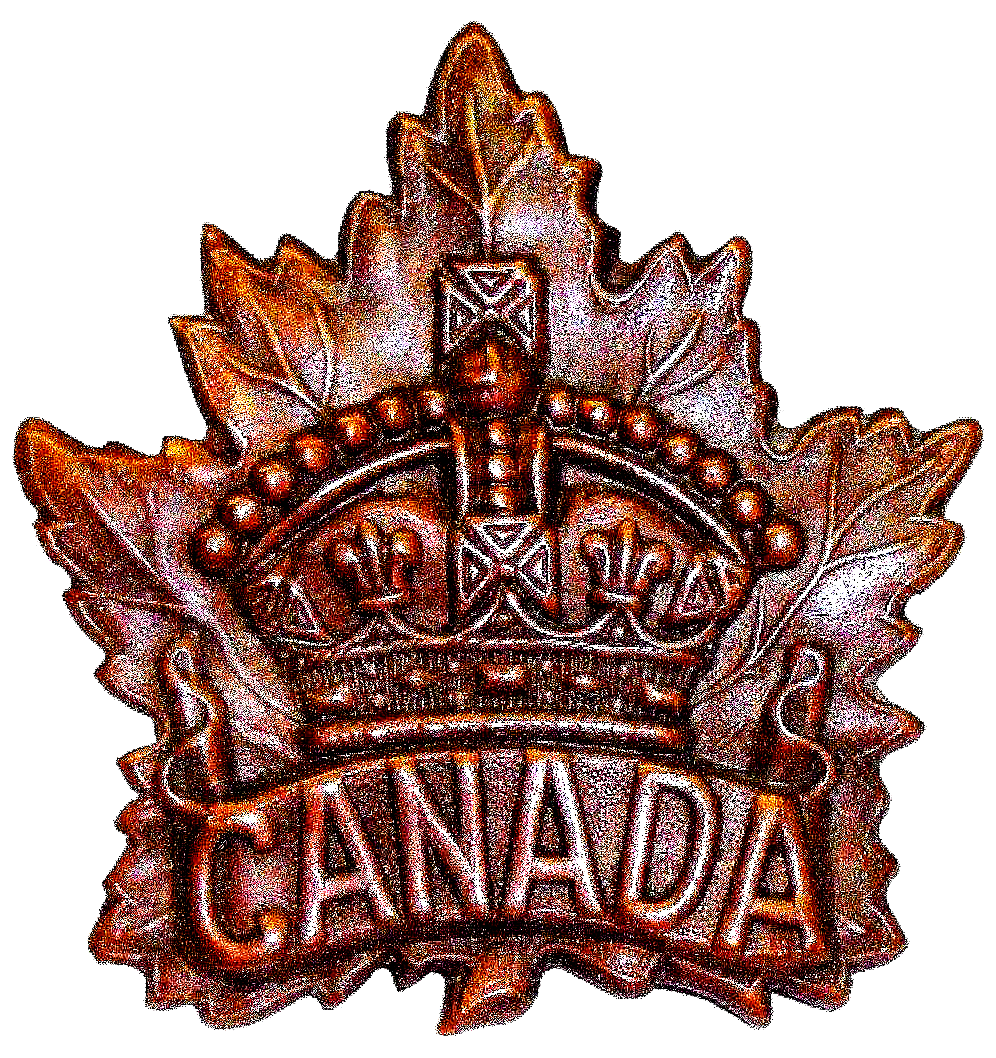

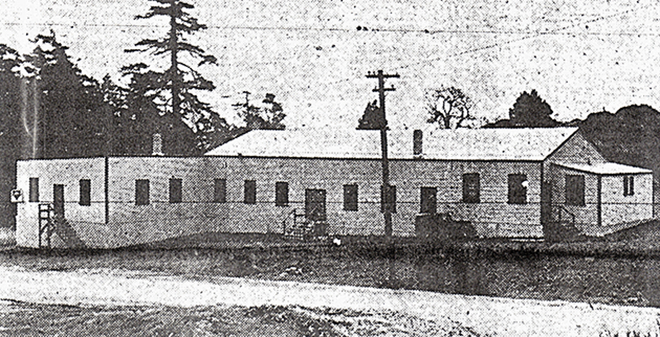
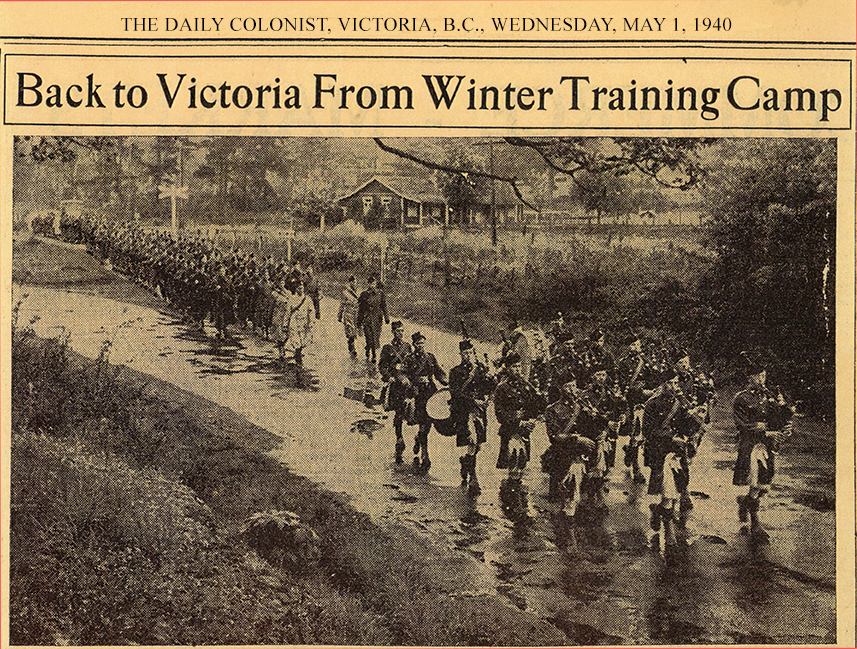
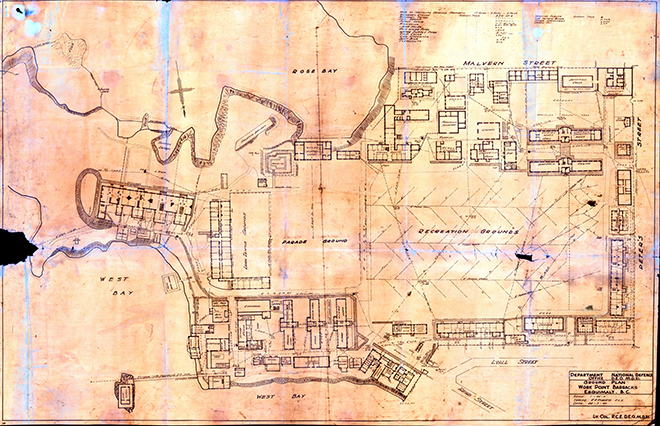
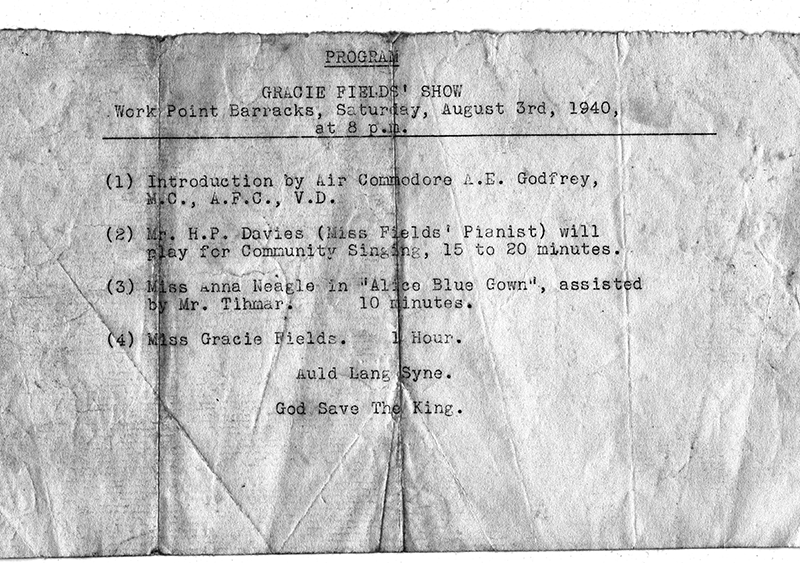
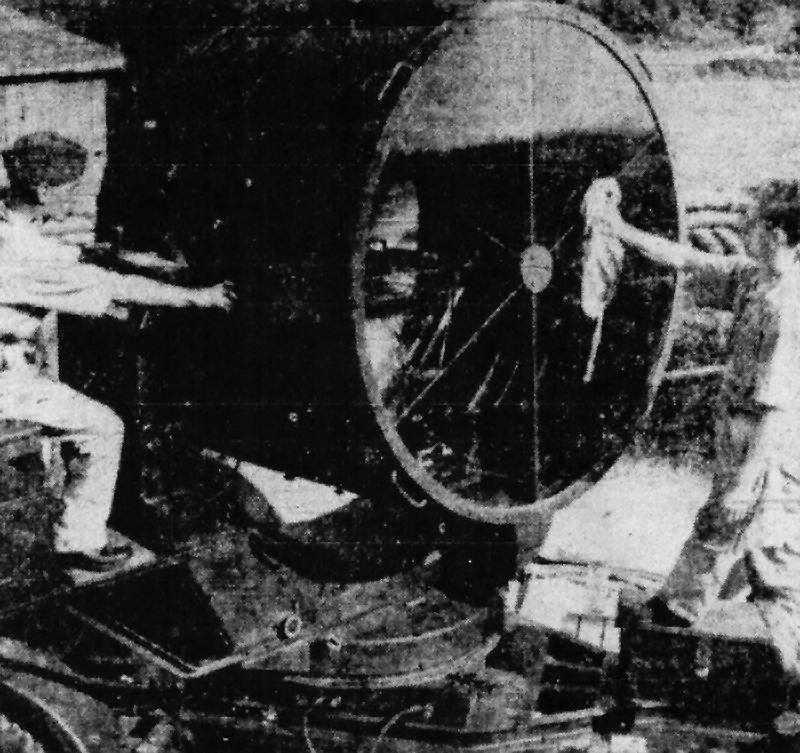
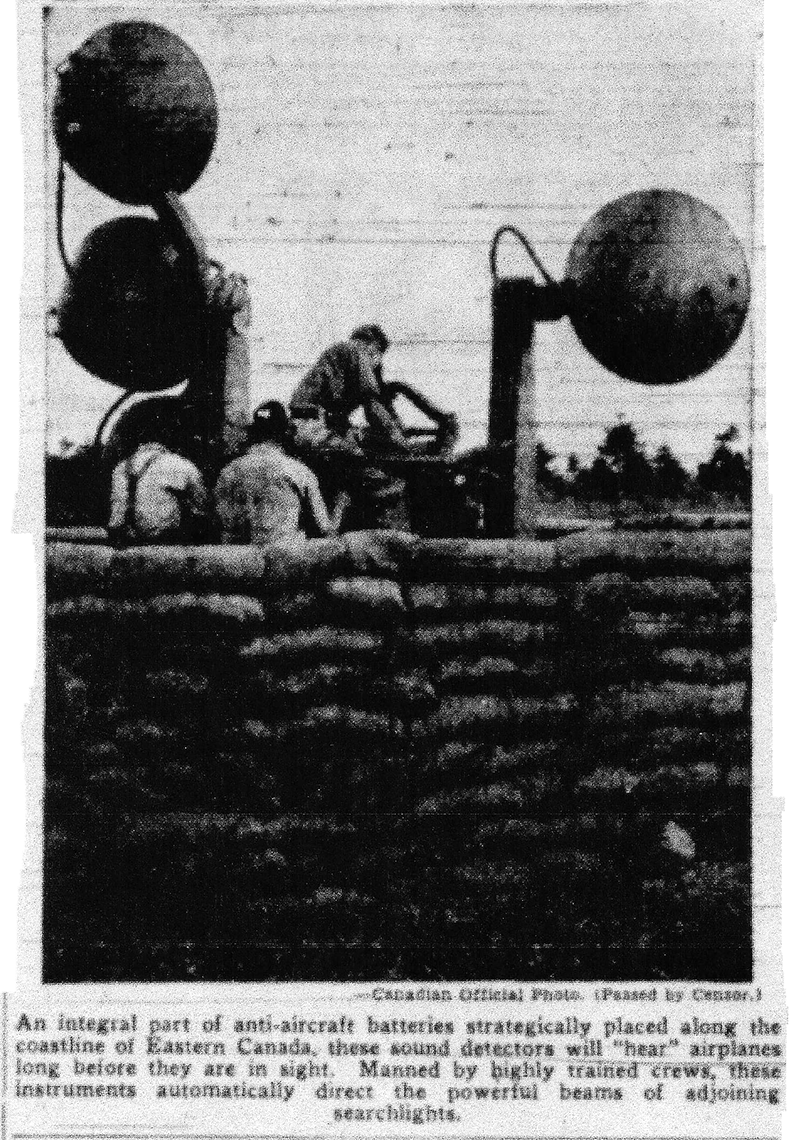
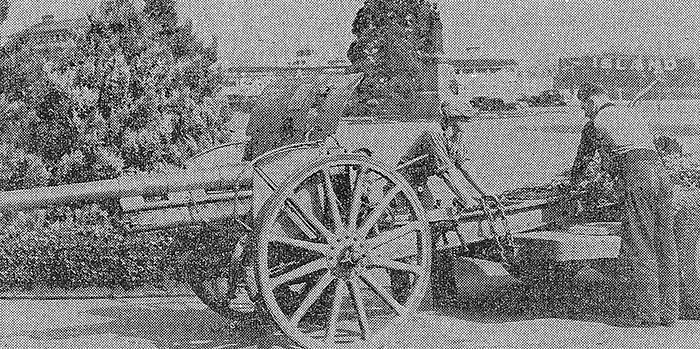
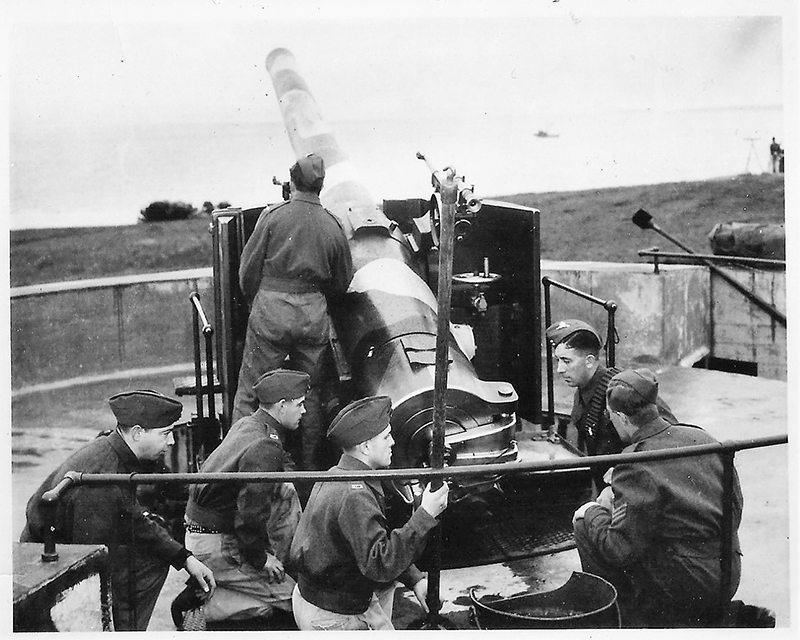
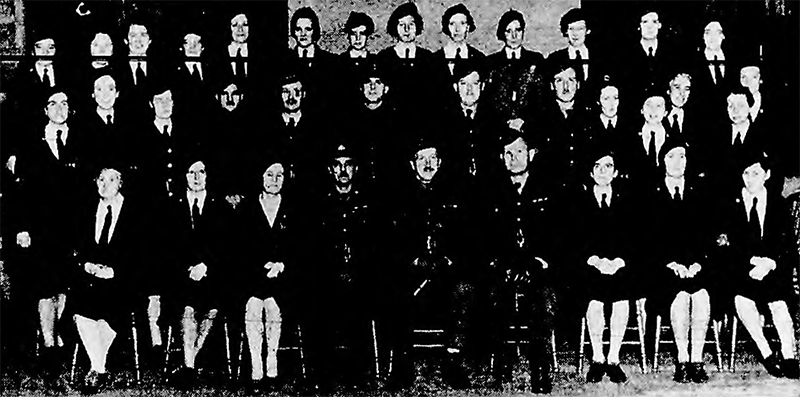
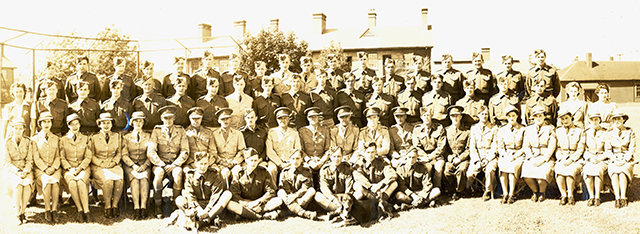
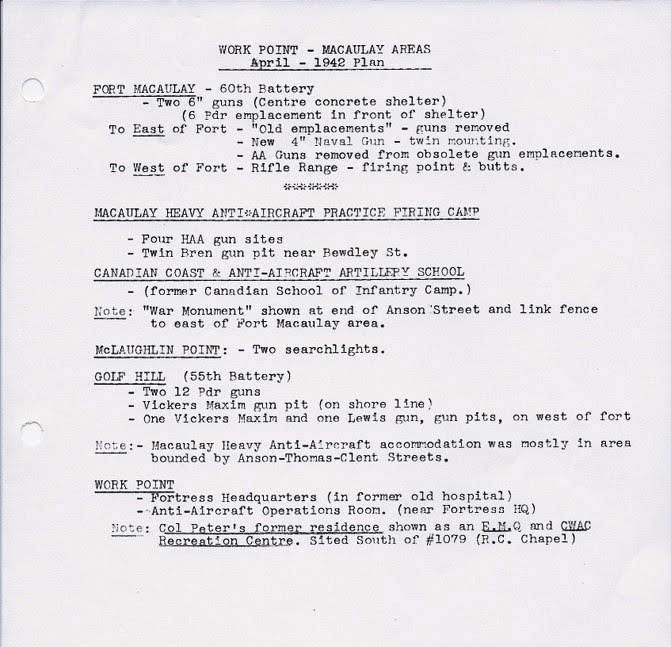
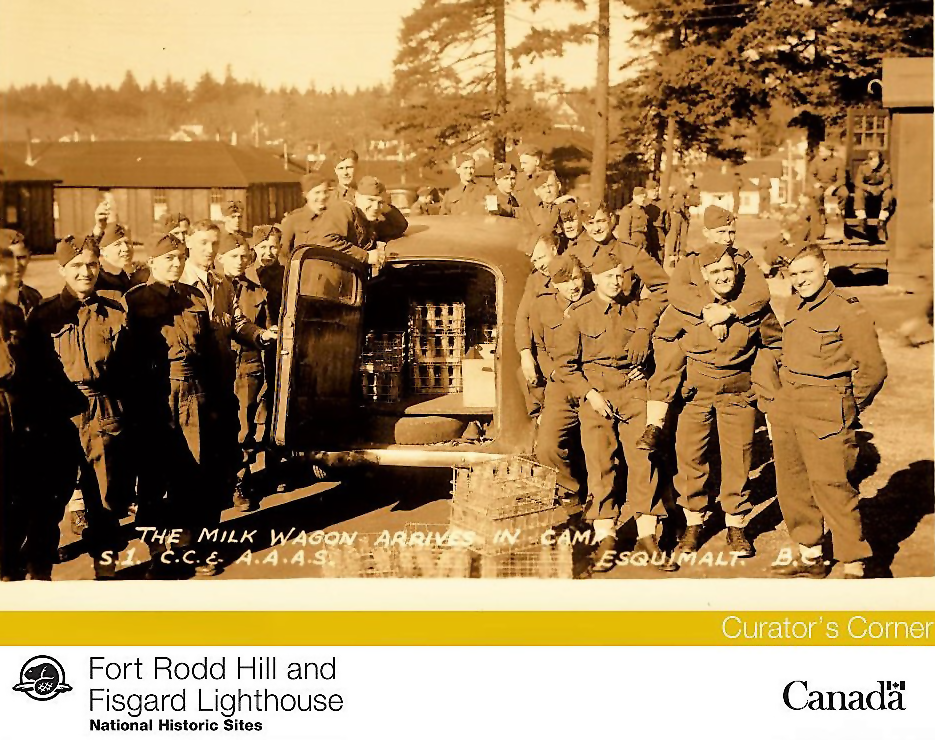
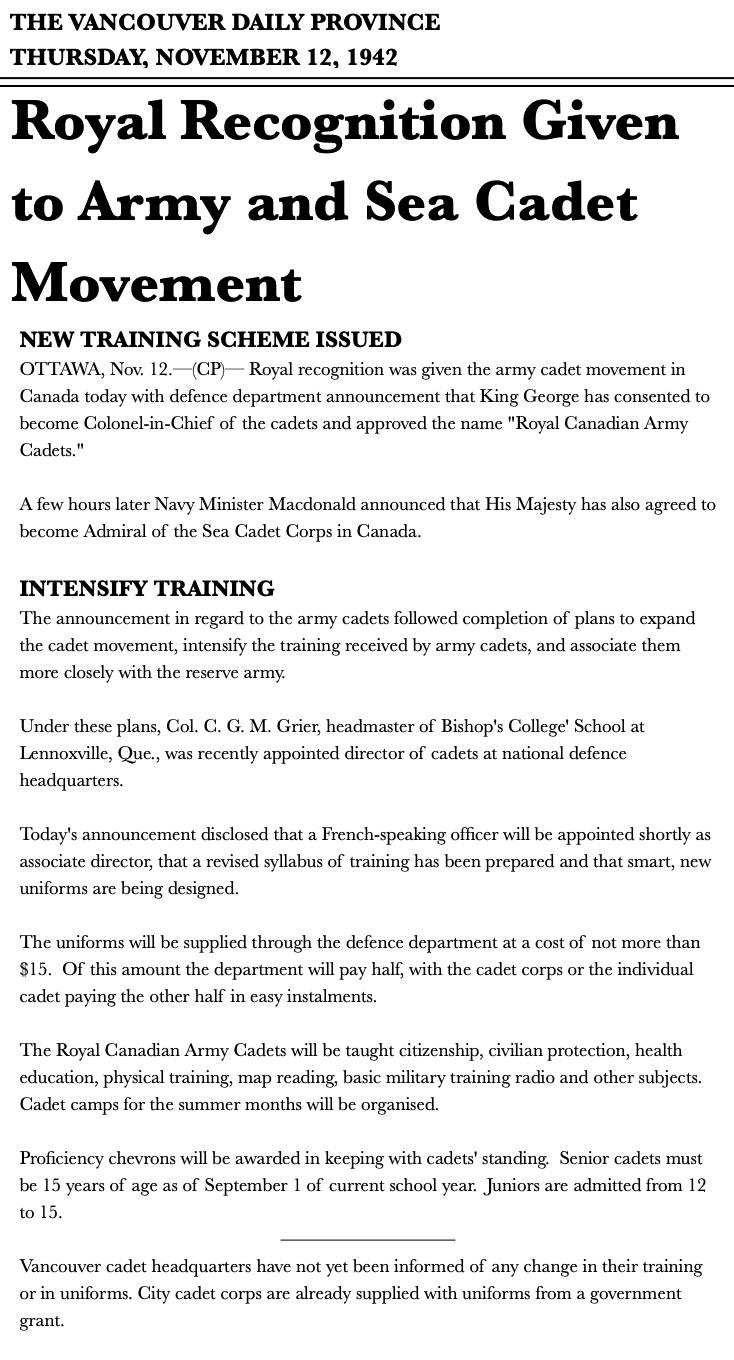
-Commandos-Strike-at-Dawn.png)
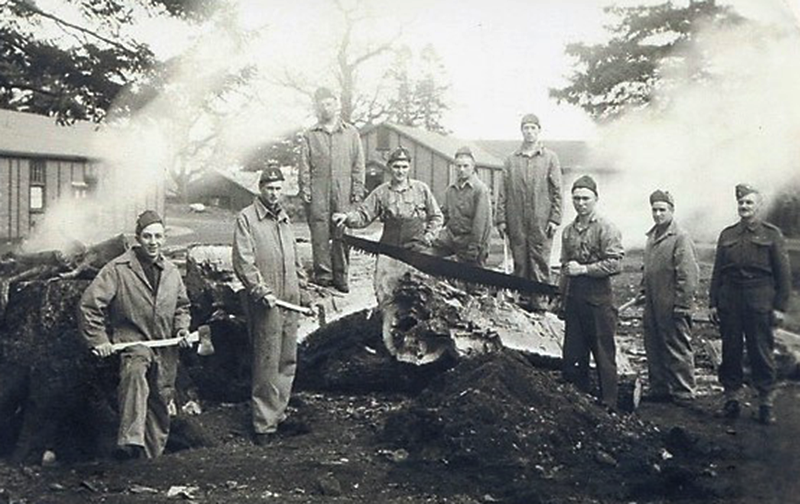
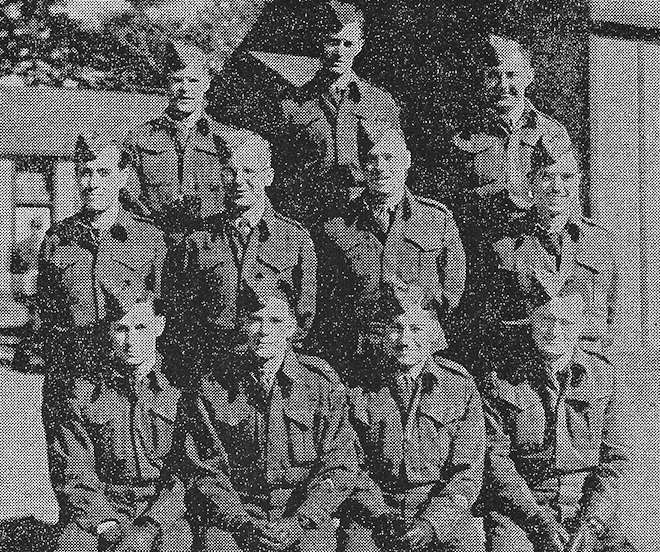
.png)

